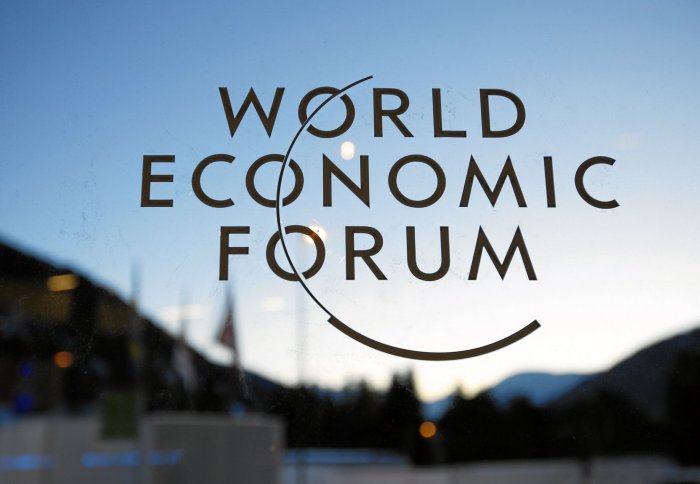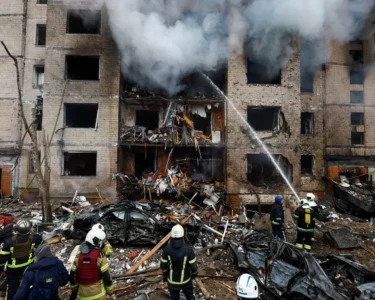Pakistan improves seven ranks on the Global Competitiveness Index of the World Economic Forum. For the ninth consecutive year, Switzerland ranks as the most competitive economy in the world, the United States and Singapore ranks at second and third respectively.
Islamabad/Geneva, Switzerland, 27 September 2017 – Pakistan has shown impressive performance and extraordinary recovery on key competitiveness indicators. The country has been successful in strengthening and improving its institutions and macroeconomic framework, showing stability and improvements to its global competitiveness footing.
The report is an annual assessment of the factors driving countries’ productivity and prosperity. The World Economic Forum defines competitiveness as the set of institutions, policies, and factors that determine the level of productivity of a country, GCI scores are calculated by drawing together country-level data covering 12 categories – the pillars of competitiveness – that collectively make up a comprehensive picture of a country’s competitiveness.
Drawing on data going back 10 years, the report highlights in particular three areas of greatest concern. These include the financial system, where levels of “soundness” have yet to recover from the shock of 2007 and in some parts of the world are declining further. This is especially of concern given the important role the financial system will need to play in facilitating investment in innovation related to the Fourth Industrial Revolution.
Pakistan’s ranking at 115 is measured by the twelve pillars of Competitiveness. On the institution’s pillar, Pakistan improved 21 ranks and stands at 90 from 111 last year. Infrastructure improved from 116 to 110, on the Macroeconomic Stability Pillar Pakistan improved 10 ranks and stands at 106.
On other pillars, among 137 countries, Pakistan ranks at Health and Primary Education 129, losing one rank from last year, Higher Education and Training improved from 123 to 120, Goods Market Efficiency 107, Labour Market Efficiency 128, Financial Market Sophistication jumped from 107 to 96, Technological Readiness 111. Maintaining the regional competitiveness edge Pakistan ranks at 28 on the pillar of Market Size. Also showing sustained improvements on Business Sophistication the rank changed from 95 last year to 81 in 2017, while on the Innovation pillar an impressive improvement of 15 points now places Pakistan at 60 ranks on the global competitiveness index.
Amir Jahangir, Chief Executive Officer of Mishal Pakistan, the Country Partner Institute of the Global Competitiveness and Benchmarking Network of the World Economic Forum said, “Pakistan is classified as a factor driven economy, which primarily depends on improving its institutions, infrastructure, macroeconomic stability, health and primary education indicators. Pakistan has managed to resist the global crisis and has shown resilience for economic recovery. Globally countries that are competitive have shown resilience to the crisis. However, the reforms agenda still remains an unfinished business”. He further said, “this year the Report also shows the performance of the political government and its ability and understanding to address the competitiveness challenges.” He also said, “the country needs to concentrate on its primary health and education to benefit from the demographic dividend it offers”. With the convergence of data and policy, Pakistan has huge potential to make an impact of global policy making for sustainable development initiatives.
This year among 114 global competitiveness indicators, Pakistan showed improvements on 82 key indices, whereas on 20 indices the country lost its previous position. While on 12 indices Pakistan, retained its position as last year.
Competitiveness has improved across most countries in South Asia, in particular in the two Himalayan countries of Bhutan (82nd, up 15) and Nepal (88th, up 10). On a similarly positive trend, Pakistan (115th, up seven) and Bangladesh (99th, up seven) have both improved their scores across all pillars of competitiveness. Both India (40th, down one) and Sri Lanka (85th, down 14 ranks) had corruption and inefficient government bureaucracy as key factors for hindering progress. Upgrading ICT infrastructure and increasing ICT use remain among the biggest challenges for the region: over the past decade, South Asia has been the area where technological readiness stagnated the most.
The analysis from Mishal, the country partner institute for Pakistan also shows the performance of some of the key regulatory bodies and other government institutions, which have shown progress as well. Among 138 countries the institutions are ranked as following: Intellectual Property Organization (97), Judicial Independence (80), Police Services (116), Auditor General of Pakistan Revenues (110), National Highways Authority (76), Pakistan Railways (52), Civil Aviation Authority (91), NEPRA (115), Higher Education Commission of Pakistan (116), National Vocational and Technical Training Commission (99), Competition Commission of Pakistan (70), Pakistan Customs (93), State Bank of Pakistan among other 138 Central Banks at (89), Securities and Exchange Commission of Pakistan at (91) and Trade Development Authority of Pakistan (135).
The Global Competitiveness Report 2017-2018 also identifies Corruption as the most problematic factor for doing business in Pakistan, followed by tax rates, government instability/coups and crime and thefts. To improve the soft-data on Pakistan, the World Economic Forum worked closely with Mishal Pakistan, the country partner institute of the Global Competitiveness and Benchmarking Network of WEF. This year a total of 526 respondents from the business community was reached out through the annual Executive Opinion Survey, whereas 236 were selected from last year and 290 from this year. The World Economic Forum reached out to more than 12,000 business leaders globally. This year Pakistan had the third largest sample size in the world after China and Mexico.
“Global competitiveness will be more and more defined by the innovative capacity of a country. Talents will become increasingly more important than capital and therefore the world is moving from the age of capitalism into the age of talent. Countries preparing for the Fourth Industrial Revolution and simultaneously strengthening their political, economic and social systems will be the winners in the competitive race for the future,” said Klaus Schwab, Founder and Executive Chairman, World Economic Forum.
Another key finding is that competitiveness is enhanced, not weakened, by combining degrees of flexibility within the labor force with adequate protection of workers’ rights. With vast numbers of jobs set to be disrupted as a result of automation and robotization, creating conditions that can withstand economic shock and support workers through transition periods will be vital.
The Report states that “Despite positive development, leaders are facing major predicaments when it comes to economic policy. Uneven distribution of the benefits of economic progress, generational divides, rising income inequality in advanced economies, and increasing environmental degradation have heightened the sense that the economic policies of past years have not served citizens or society well. Coupled with growth rates that remain below historical levels, these quandaries put many prevalent models of economic growth and related policies into question. Major technological disruption and the new fault lines emerging in the global economic and political order add further uncertainty about the types of policies that will make economies future-proof. Taken together, all of these factors are challenging decision makers to find new approaches and policies to advance economic progress.”
The report also highlights on why quantitative easing and other monetary policy measures have been insufficient in reigniting long-term growth for the world’s advanced economies. The report finds that interventions by economies with comparatively low GCI scores failed to generate the same effect as those performed in economies with high scores, suggesting that strong underlying competitiveness is a key requirement for successful monetary stimulus.
The report offers insight into how priorities may be shifting for nations in earlier stages of development. While basic drivers of competitiveness such as infrastructure, health, education and well-functioning markets will always be important, data in the GCI suggests that a nation’s performance in terms of technological readiness, business sophistication and innovation is now as important in driving competitiveness and growth.
The Global Competitiveness Report’s competitiveness ranking is based on the Global Competitiveness Index (GCI), which was introduced by the World Economic Forum in 2005. The 12 pillars of Competitiveness are institutions, infrastructure, macroeconomic environment, health and primary education, higher education and training, goods market efficiency, labor market efficiency, financial market development, technological readiness, market size, business sophistication, and innovation.
The Top 20 and Bottom 20 Performances on the Global Competitiveness Report 2017-2018 of the World Economic Forum
Key Findings:
- TEN YEARS AFTER THE CRISIS, THE FINANCIAL SECTOR IS STILL VULNERABLE
- MORE COUNTRIES ARE ABLE TO INNOVATE, BUT THEY MUST DO MORE TO SPREAD THE BENEFITS
- THERE NEED BE NO TRADE-OFF BETWEEN LABOR MARKET FLEXIBILITY AND WORKERS’ RIGHTS
- ACCESS FULL REPORT, INFOGRAPHICS, VIDEOS AND MORE VISIT: WWW.WEFORUM.ORG




